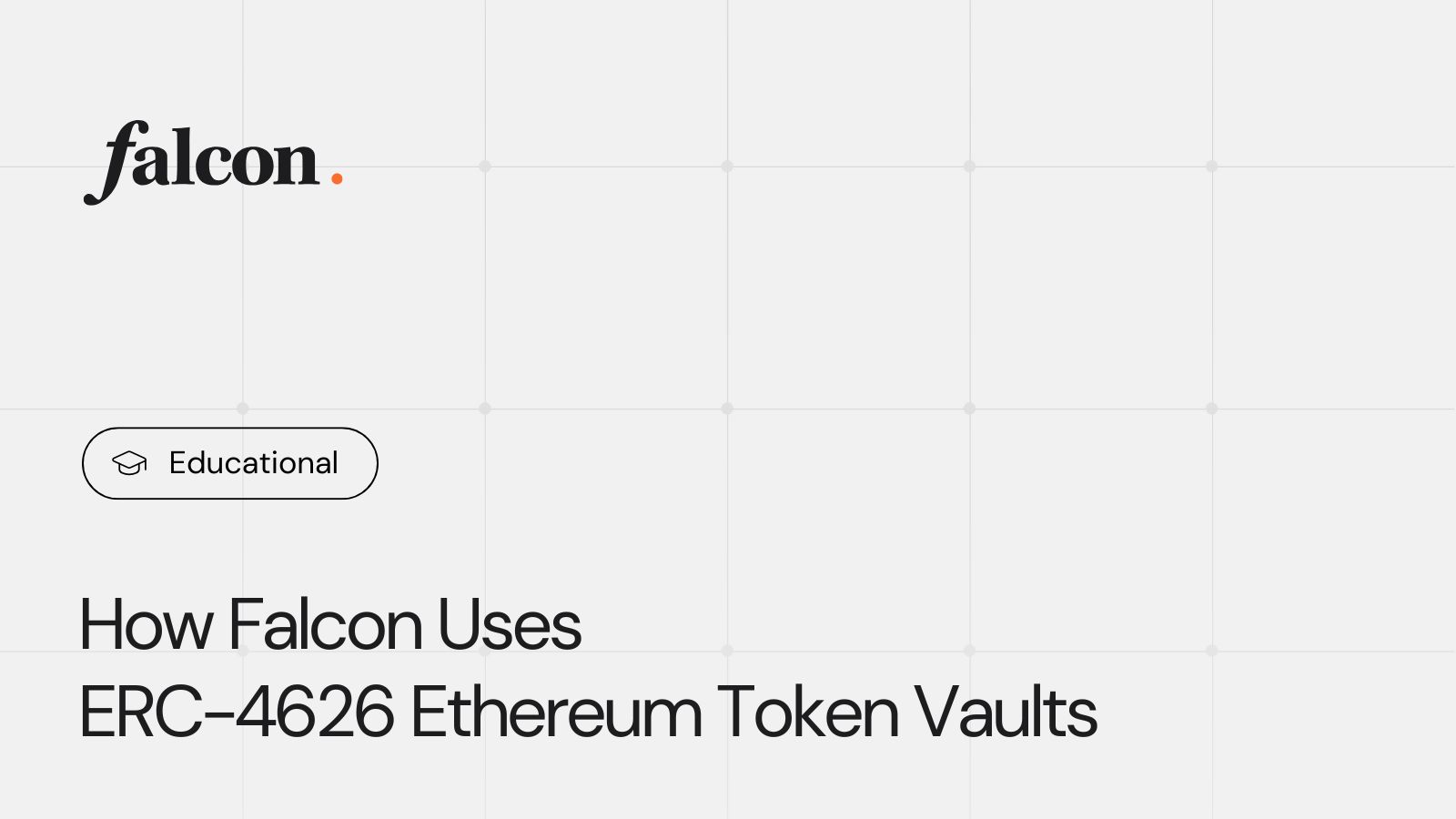How Falcon Finance Uses ERC-4626 Ethereum Token Vaults to Protect Users
Updated • 15 Aug 2025
Published • 2 Apr 2025
4 mins

As a next-generation synthetic dollar project, Falcon Finance uses the latest blockchain standards to build trust and transparency for its users. One of the key components of Falcon is the vaults built on Ethereum’s ERC-4626 standard, used for locking user funds and generating yield. This article explores what ERC-4626 is and how Falcon Finance employs it to enhance user protection and ensure traceability of operations via blockchain, particularly within its staking mechanism.
ERC-4626: Setting a New Standard for Yield-Bearing Vaults
Before talking about Falcon’s implementation, let us first explain the ERC-4626 standard. Proposed as Ethereum Improvement Proposal (EIP) 4626 and approved in March 2022, ERC-4626 strives to create a universal standard for yield-bearing vaults, also known as tokenized vaults.
In crypto, there are protocols that offer users the ability to deposit collateral and receive “shares”, or “vault tokens” in return. Vault tokens represent a user’s share of the underlying asset pool and are designed to appreciate in value over time as the protocol generates yield.
Before ERC-4626, various protocols developed vaults with different interfaces and logics. Such a fragmentation led to integration challenges: engineers had to write custom code for each vault they wanted to interact with, increasing both complexity and costs. In addition, it carried security risks.
ERC-4626 addressed these issues by providing a standardized API for tokenized vaults, defining a set of common functions for actions like depositing assets, minting shares, withdrawing assets, and redeeming shares. By adhering to this standard, crypto projects, including Falcon, ensure ease of interaction between one another, reduce development overhead, and benefit from a shared security foundation, making vaults easier to audit.
Falcon Finance’s Implementation of ERC-4626
Using Token Vaults for Staking USDf and Earning Yield
Falcon Finance utilizes a dual-token system: USDf, its overcollateralized synthetic dollar, and sUSDf, a yield-bearing token. The process of earning yield involves staking USDf to mint sUSDf. This is precisely where Falcon Finance leverages the power of ERC-4626.
When users stake their USDf tokens, obtained after exchanging stablecoins, they get locked within an ERC-4626 compliant vault. Falcon Finance employs this standard to distribute yield derived from a set of advanced earning strategies: positive and negative funding rate arbitrage, cross-exchange spreads, and altcoin staking. The amount of sUSDf a user receives is calculated based on the vault’s current exchange rate, which reflects the total USDf staked, plus all the yield generated and distributed by the protocol’s strategies.
Essentially, Falcon Finance allows for increasing APY rate of stablecoins and converting volatile crypto assets into a yield-bearing USDf token, offering more stable exposure and potential returns compared to holding altcoins directly.
Enhancements to Falcon Finance’s Security System
In addition to transparency and efficiency, Falcon Finance enhances user protection through smart contract safeguards. By leveraging the ERC-4626 standard, the protocol benefits from a well-audited framework that helps prevent common exploits, such as vault inflation attacks.
This type of attack involves manipulating the vault’s share price (often through a large deposit followed by a direct transfer of underlying assets to the vault) right before a victim deposits, causing the victim to receive far fewer shares than they should. By implementing ERC-4626, Falcon aims to mitigate this risk, ensuring users receive a fair amount of sUSDf for their staked USDf.
Overall, by adopting this widely recognized standard, Falcon Finance benefits from the collective scrutiny and testing by the huge Ethereum developer community that the standard has undergone.
Building Trust Through Blockchain Standards
Falcon Finance’s decision to build its staking and yield distribution mechanism around the ERC-4626 standard demonstrates its commitment to high-grade user security. By leveraging the established Ethereum standard of ERC-4626, Falcon Finance not only streamlines its operations but also provides users with a higher degree of confidence that their funds are managed according to best practices, protected against common exploits, and handled with the transparency inherent to well-designed on-chain systems. This commitment to security is one of the reasons why Falcon Finance is gaining traction as a synthetic dollar protocol.